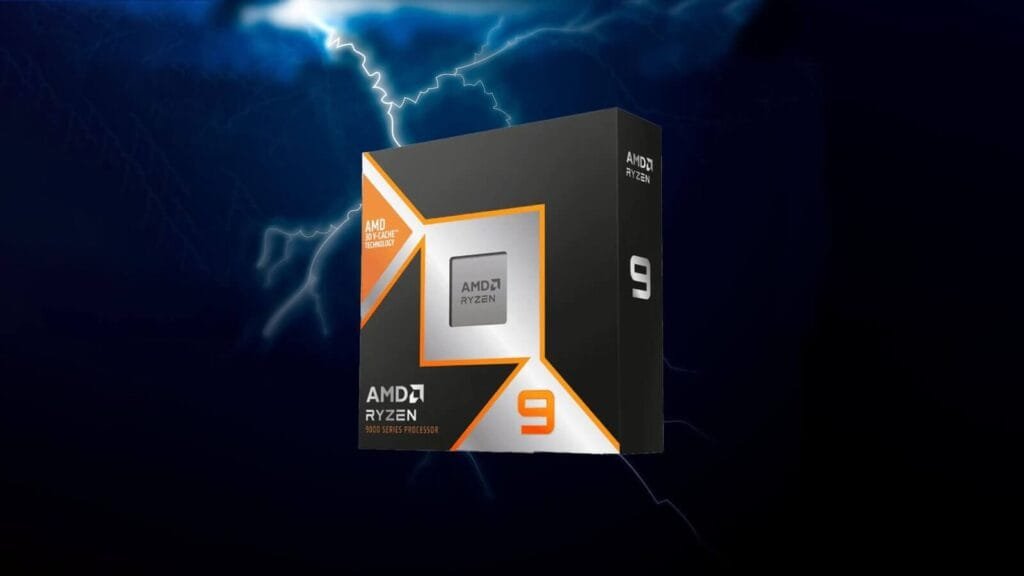Intel’s Core Ultra 300 “Panther Lake” platform, targeted at next-generation laptops and edge applications such as robotics, adopts a chiplet-based package utilizing Foveros-S stacking technology. The compute tile is fabricated on Intel’s 18A process node, while the graphics tile uses Intel 3 or TSMC N3E, and the platform controller tile employs TSMC N6, all integrated onto a shared base tile. This architecture supports up to 16 CPU cores, blending new Cougar Cove performance cores (P-cores)—an evolution of Lion Cove with enhancements like improved memory disambiguation, expanded TLBs, a refined multi-level branch predictor, 3 MB L2 cache per core, 256 KB L1 cache, and a compact L0 data cache—alongside Darkmont efficiency cores (E-cores) that surpass Skymont in width and speed, featuring a 9-wide decode unit, a 416-entry out-of-order window, and 26 dispatch ports, with four E-cores sharing 4 MB L2 cache per cluster.
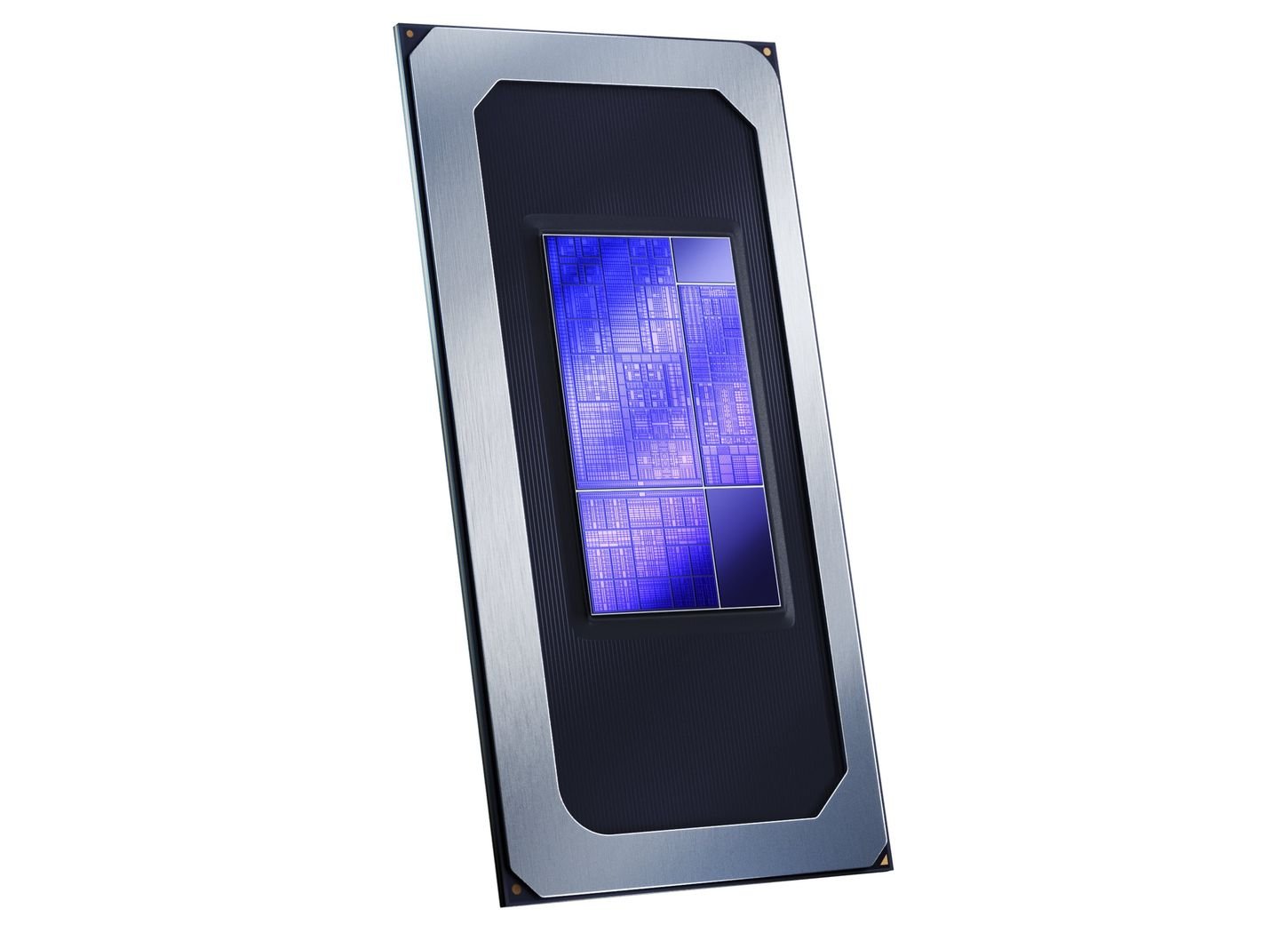
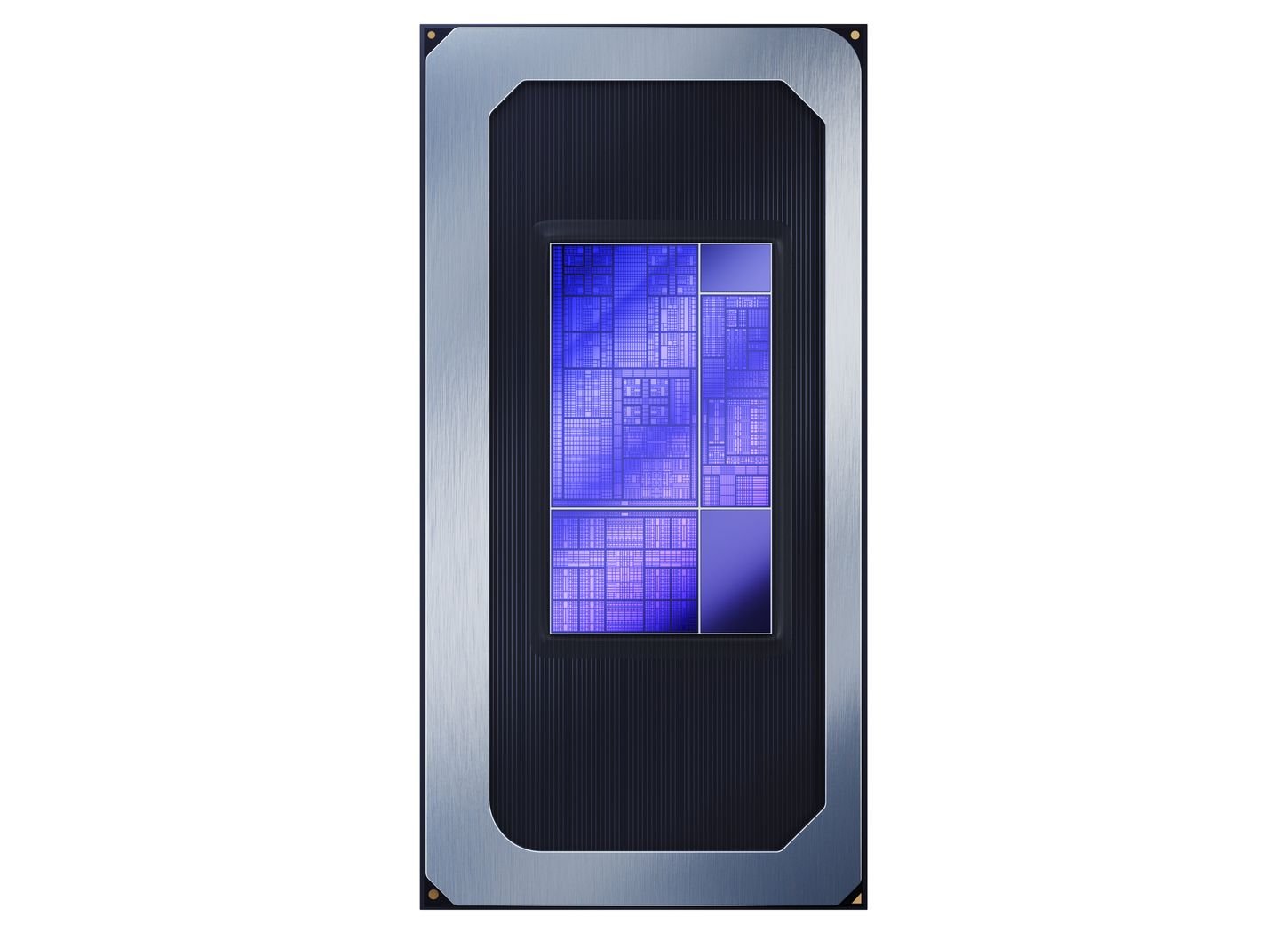

Source : Intel
A dedicated four-core Low Power Efficiency (LP-E) cluster, based on the same Darkmont design, handles background tasks efficiently. Available configurations include an entry-level 8-core variant with four P-cores and four LP-E cores, a balanced 16-core option comprising four P-cores, eight E-cores, and four LP-E cores, and a top-tier 16-core setup paired with a 12-core Xe3 GPU. The integrated graphics leverage an advanced Xe3 architecture with up to 12 Xe cores, boasting enlarged L1 and L2 caches, superior anisotropic filtering and stencil rates, and an upgraded ray tracing unit incorporating dynamic ray management; it also enables XeSS 3 with Multi-Frame Generation for enhanced rendering fluidity and includes a Frame Generation Override control for customization.
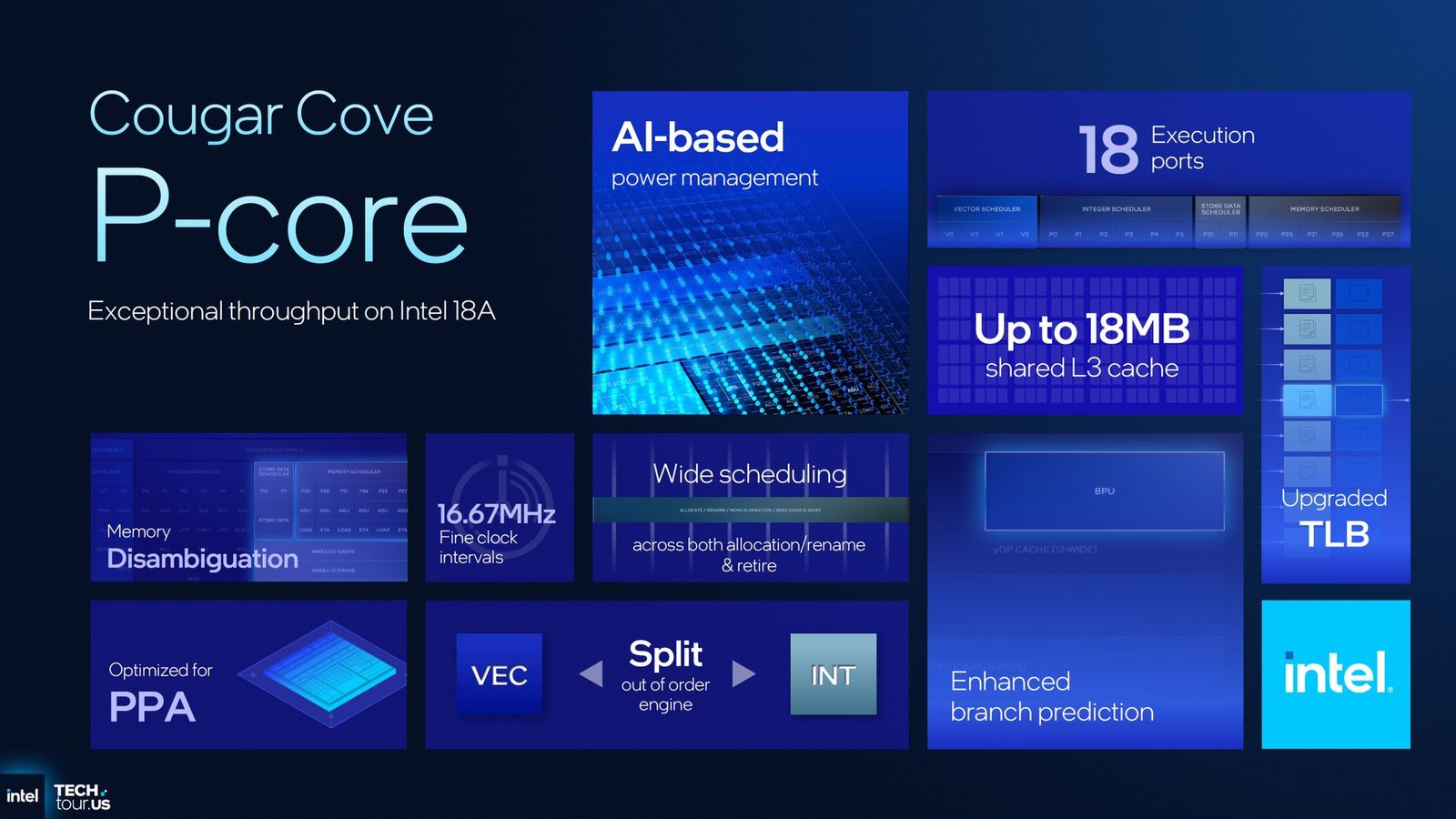
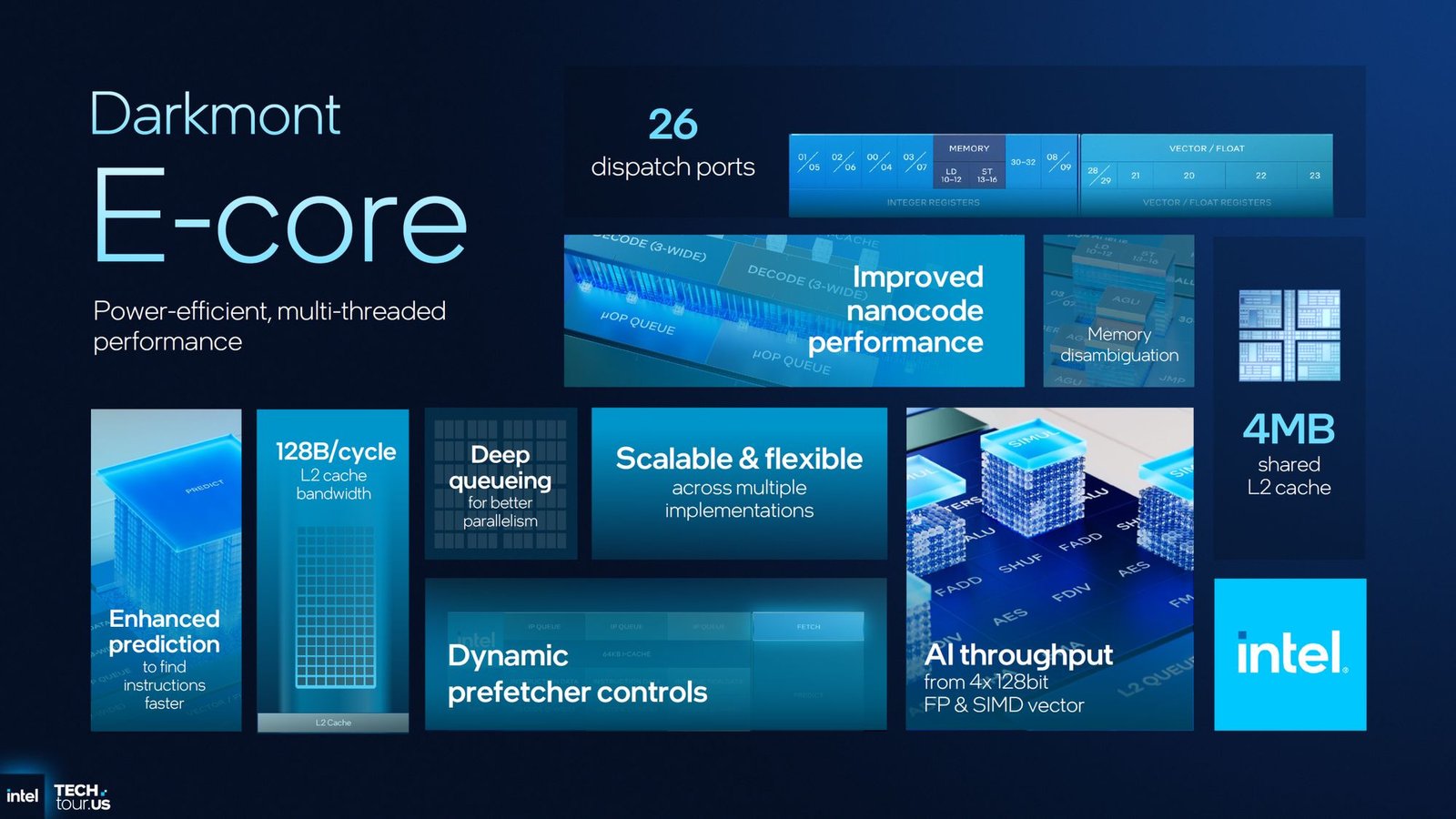
Source: Intel
Complementing this is the fifth-generation NPU5, delivering approximately 50 TOPS in AI acceleration while supporting FP8 and INT8 formats to double MAC throughput and cut power consumption by over 40%, resulting in a total platform compute capability of up to 180 TOPS when factoring in CPU and GPU contributions. The memory setup accommodates DDR5-7200 and LPDDR5X-9600 for elevated bandwidth and capacity, augmented by up to 18 MB shared L3 cache on the compute tile and an 8 MB memory-side cache to minimize DRAM access and latency, moving away from Lunar Lake’s memory-on-package strategy.
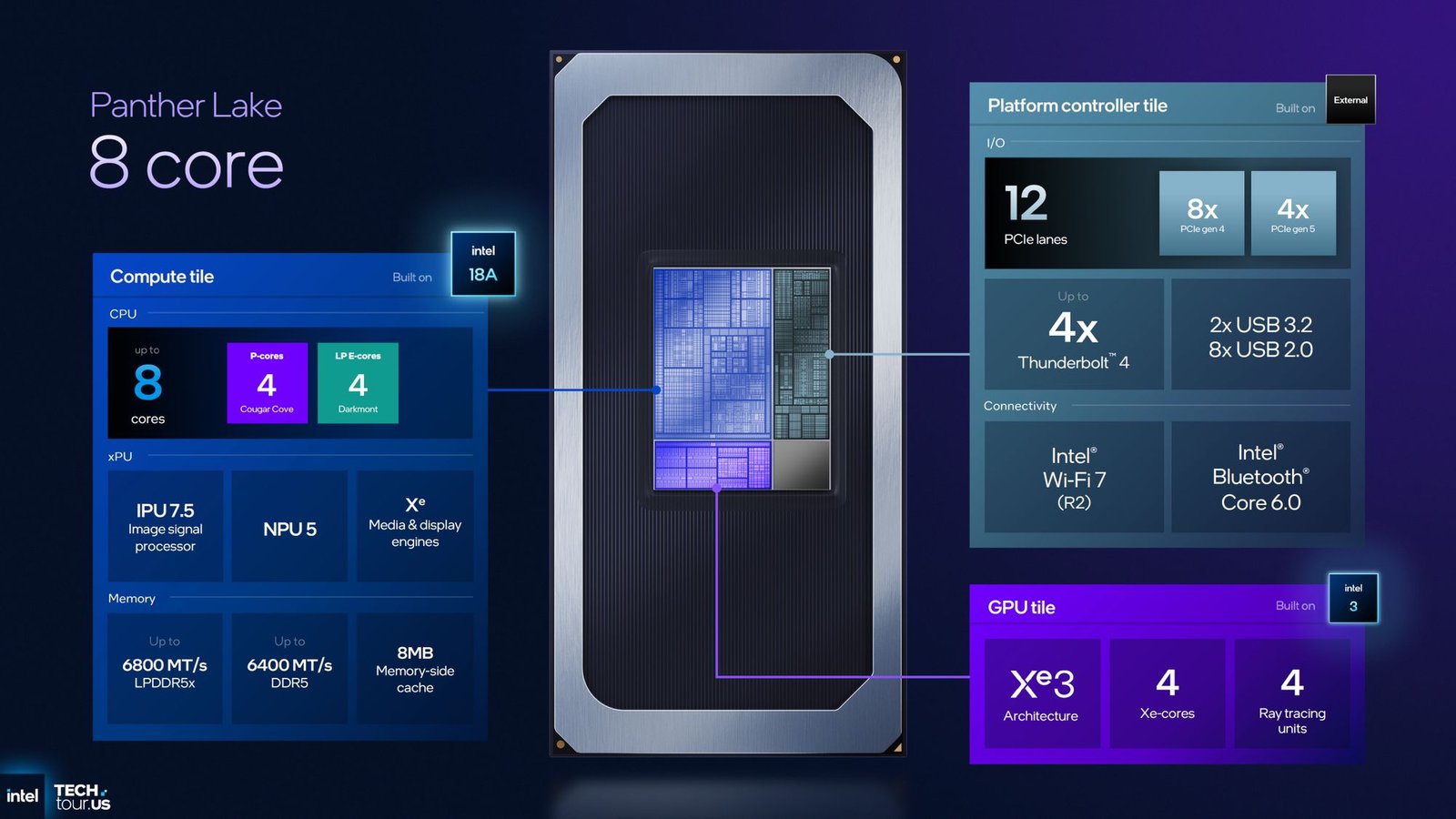
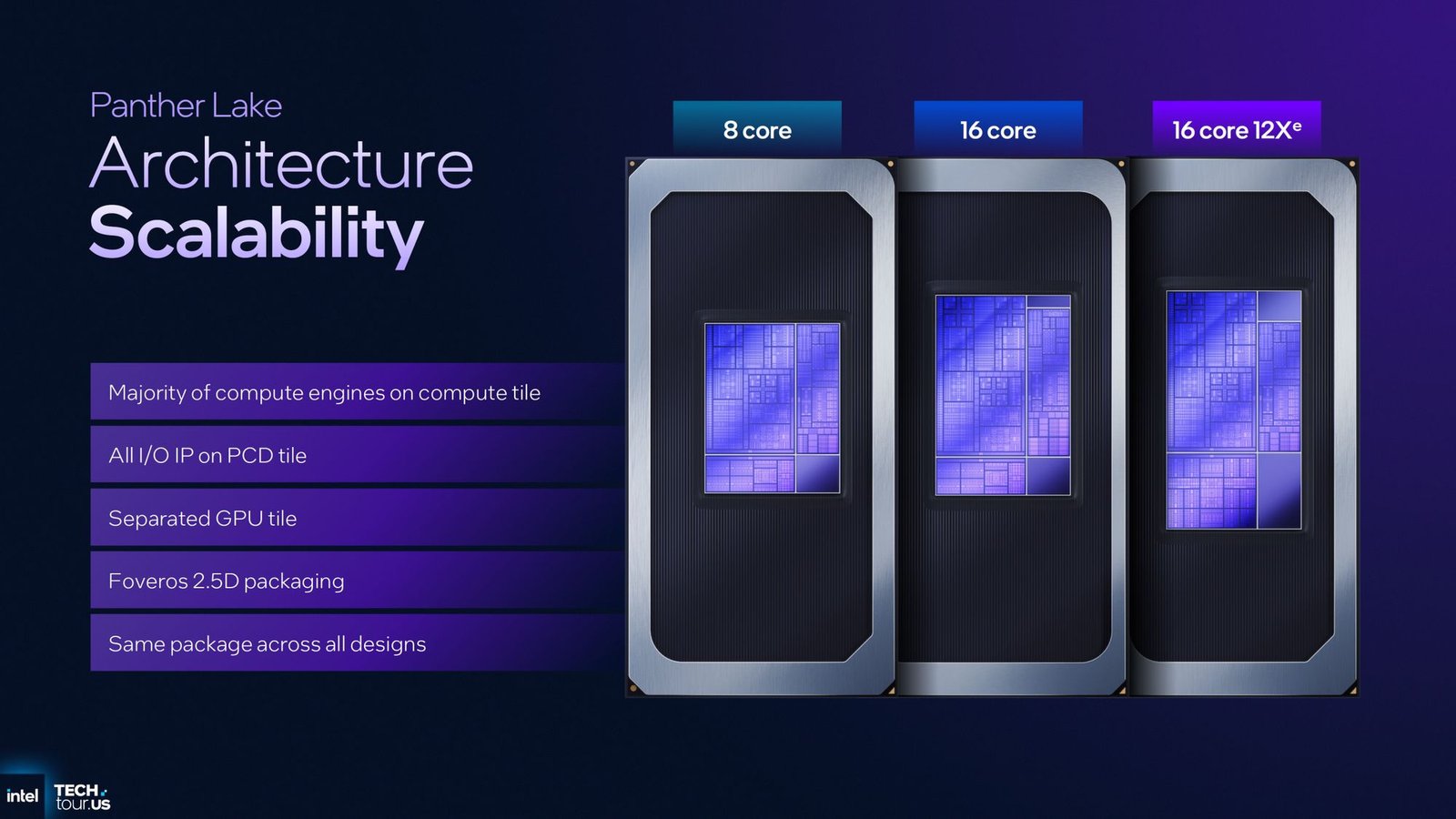
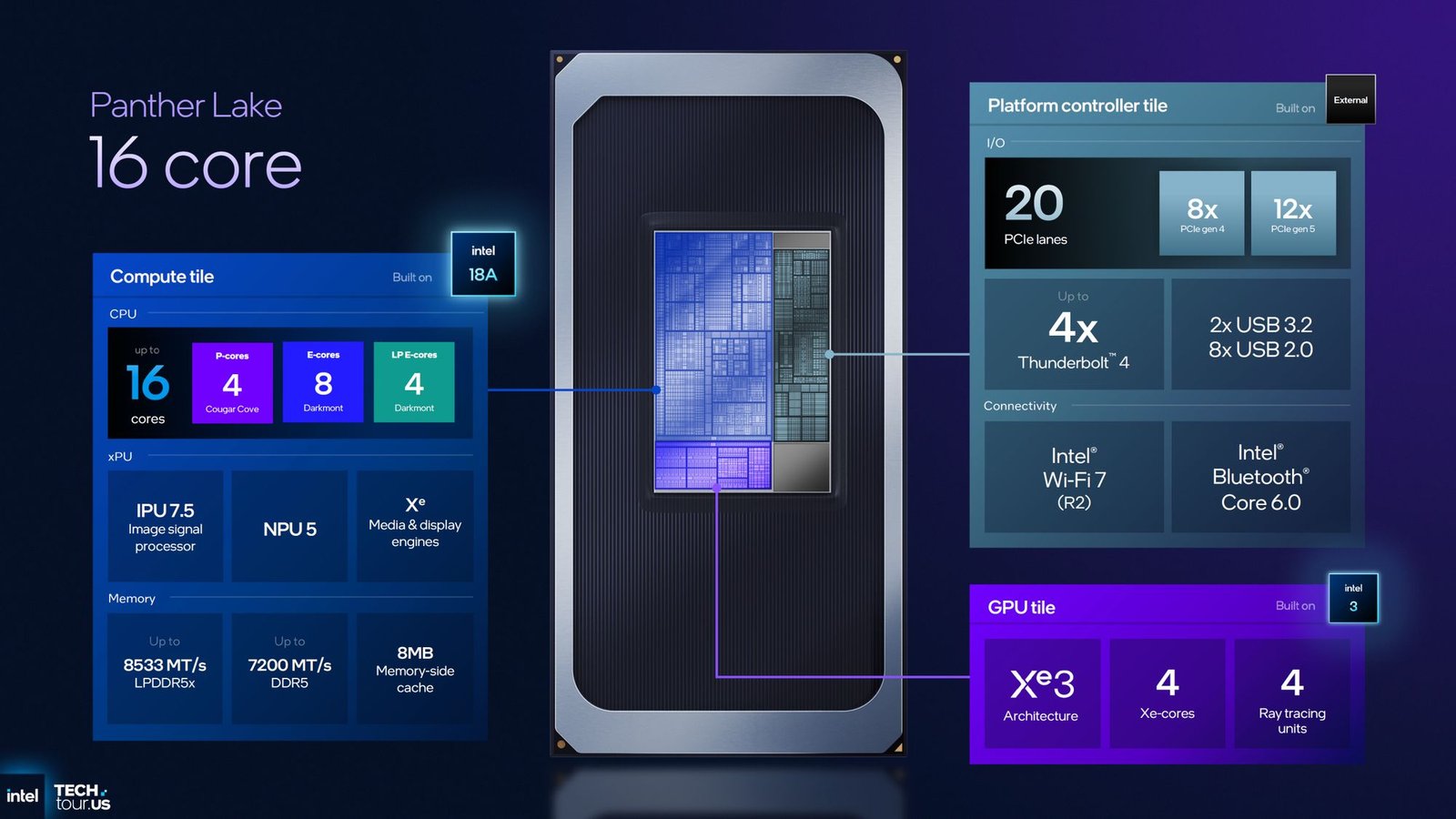
Source: Intel
In performance comparisons, Panther Lake achieves power efficiency on par with Lunar Lake and performance levels akin to Arrow Lake, delivering over 50% faster overall CPU performance; single-threaded tasks see about 10% gains over Lunar Lake and Arrow Lake at equivalent power envelopes or 40% reduced power for matching performance, while multi-threaded workloads exceed Lunar Lake by more than 50% at the same power or require up to 30% less power to hit Arrow Lake’s benchmarks. Graphics see over 50% uplift versus Lunar Lake at identical power, with gaming frame rates improved by up to 10% thanks to an evolved Thread Director that offloads tasks to E-cores during intense GPU loads.
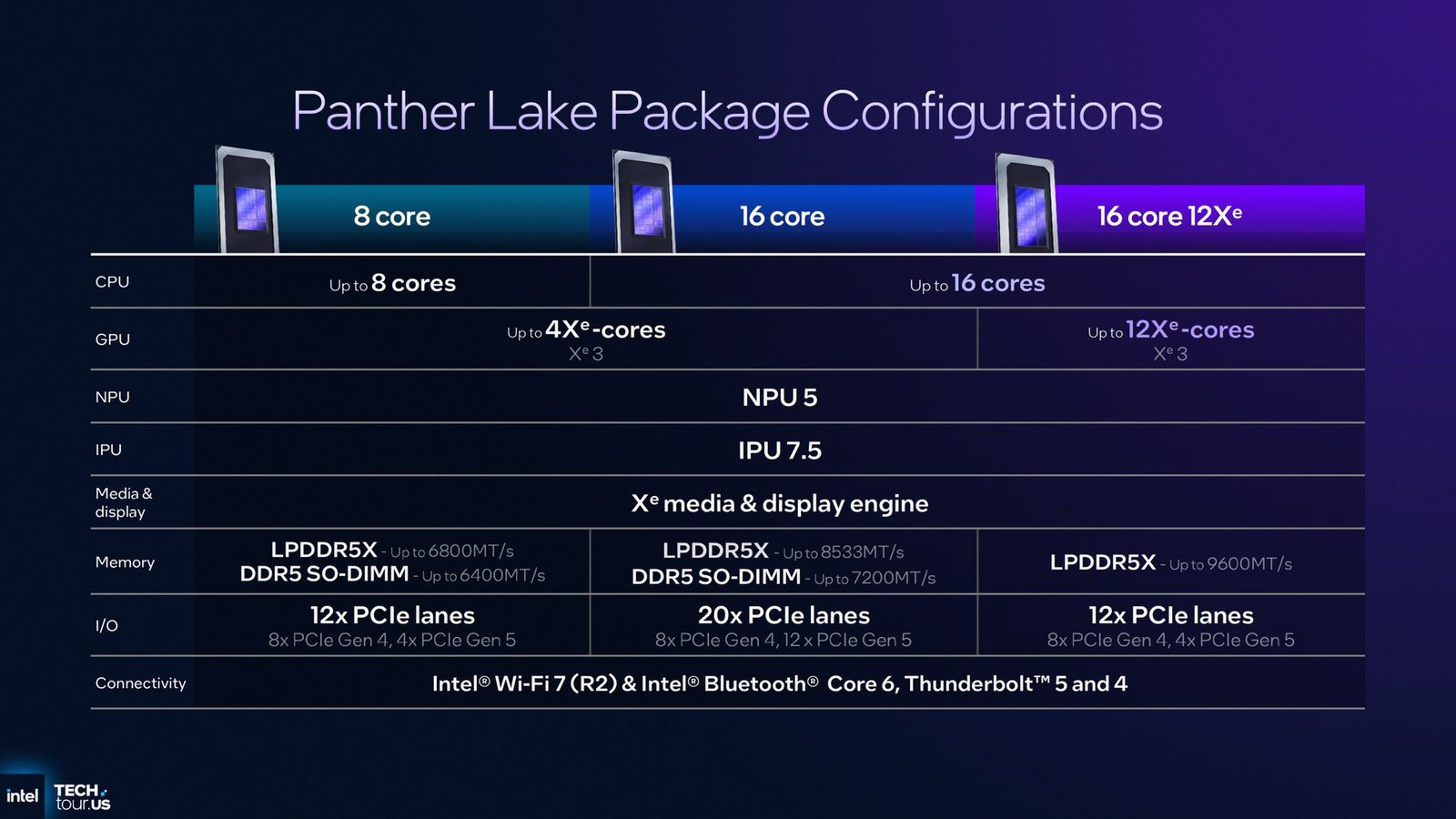
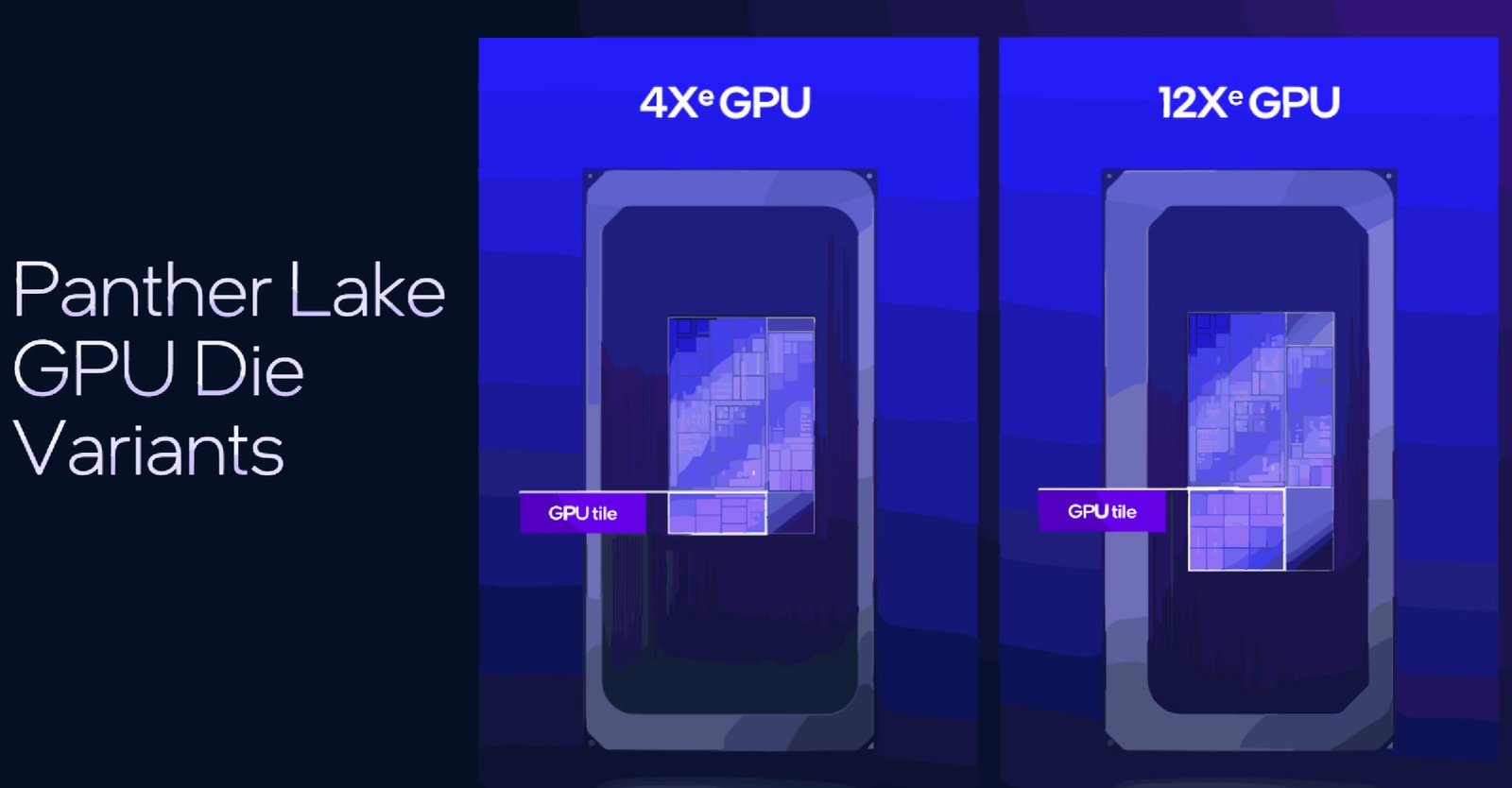
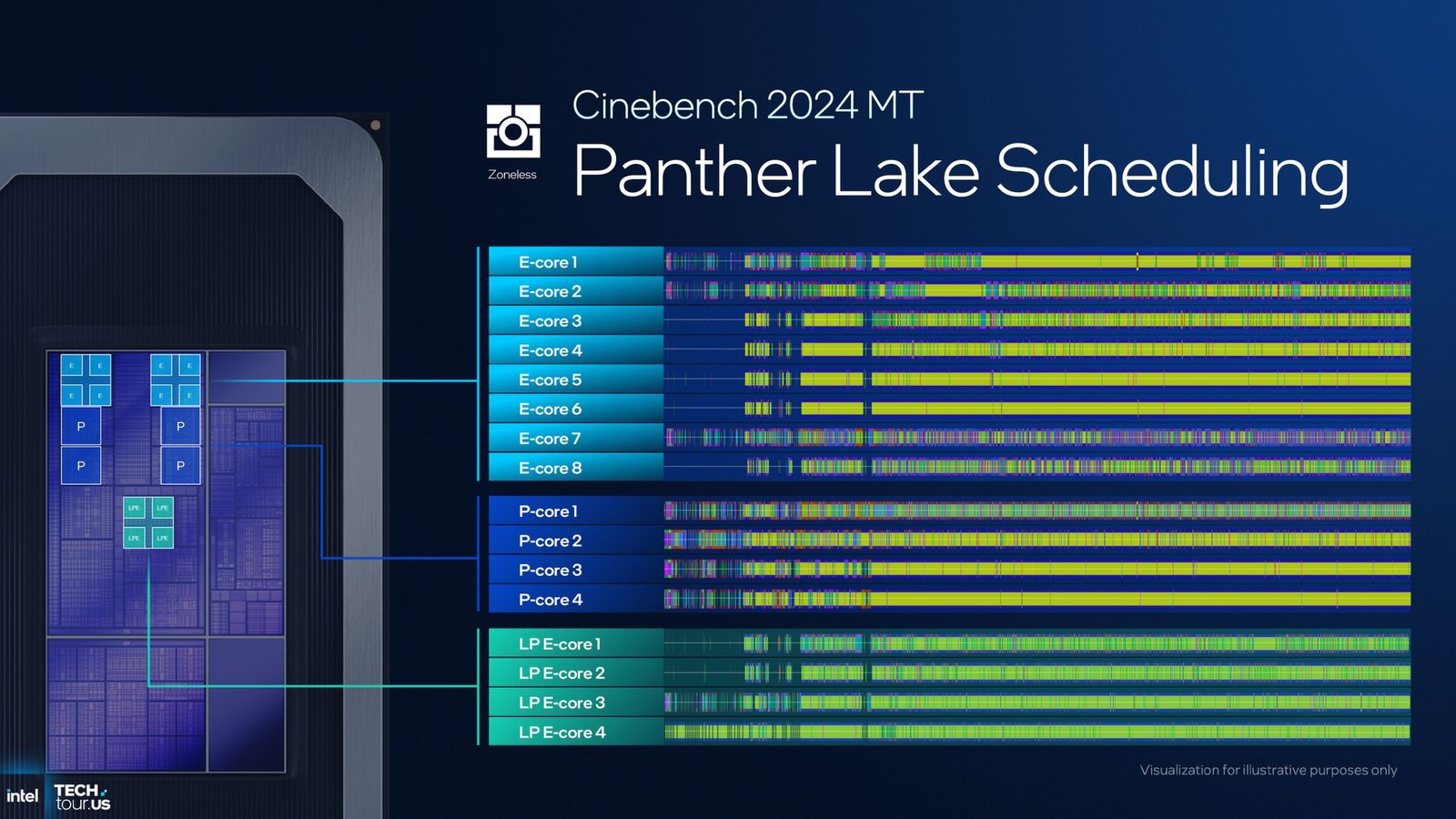
Source : Intel
The NPU represents a incremental step up from Lunar Lake’s NPU4, emphasizing greater area efficiency. Further enhancements include the Intelligent Experience Optimizer for seamless power mode transitions, boosting performance by up to 20% within constraints; connectivity options encompass up to 20 PCIe lanes, integrated Thunderbolt 4, optional discrete Thunderbolt 5 support, Wi-Fi 7 Revision 2 via the Whale Peak 2 BE211 module, and Bluetooth Core 6.0 with LE Audio and Auracast capabilities; plus, a fresh Intel Robotics AI software suite paired with a reference board for AI-driven robotics development. Manufacturing is ramping into high-volume production this year, with initial SKUs shipping before the end of 2025 and widespread availability, including in notebook systems, commencing in Q1 2026 around CES.
Source: Intel


